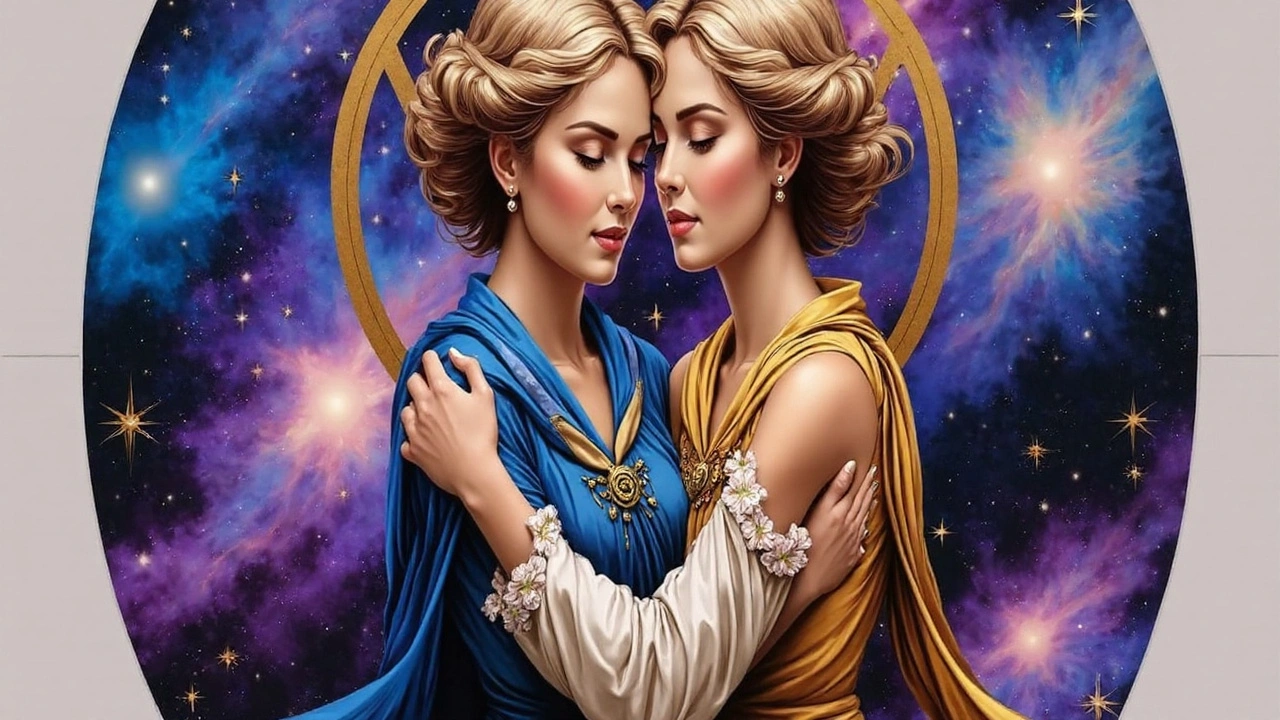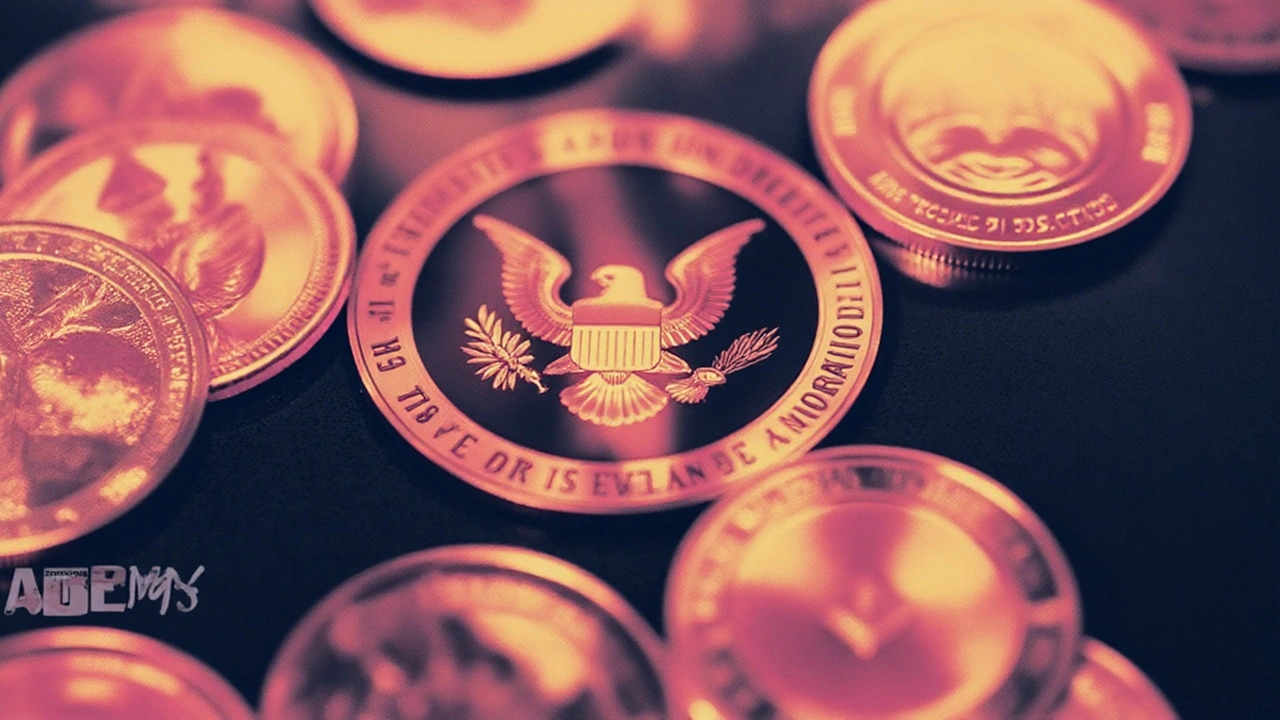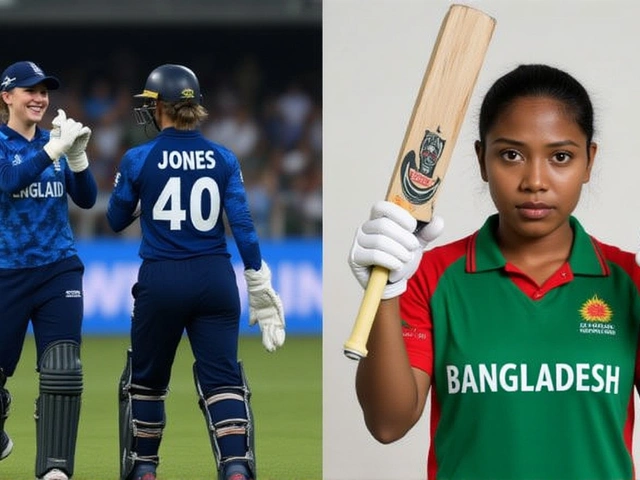
Type a sentence, wait a few minutes, and your selfie turns into a toy-like figurine or a 1980s neon poster. That’s the promise of Nano Banana—the playful nickname sweeping social feeds for Google’s latest image model, officially Gemini 2.5 Flash Image. It’s built into the Gemini app on web and mobile, and it lets you edit or generate images by describing what you want in everyday language. No layers, no masks, no brushwork.
The buzz isn’t hype alone. The model handles both full image generation and surgical edits on your own photos. You can replace backgrounds, blend multiple images, preserve a subject’s identity across a sequence, or nudge tiny details like the color of a single button. Creators are using it for stylized portraits, brands are testing it for product shots, and designers are mocking up interiors without dragging furniture around a 3D app.
What Nano Banana is, how it works, and where it fits
Under the nickname is Google’s Gemini 2.5 Flash Image, a model focused on fast visual creation and editing. You access it in the Gemini app with a Google account, type your instructions, and attach the images you want to modify. The system interprets your prompt, applies changes, and returns results that often look like a skilled retoucher spent an afternoon on them. Typical turnarounds range from roughly 3 to 10 minutes per image, depending on complexity and traffic.
It’s not just a “make it pretty” filter. It responds to specifics: ask for a 35mm film look with warm grain and halation; request a three-quarter studio portrait with Rembrandt lighting; swap a dull wall for a rainy Tokyo alley at night; or combine a product photo with a reflective marble tabletop and soft window light. If you describe your goal clearly, the model tends to honor the brief.
Key capabilities that users keep leaning on:
- Multi-image blending: merge a person from one shot with a setting from another, while matching light and perspective.
- Character consistency: carry the same face and features across a series of images for a story or campaign.
- Targeted transformations: edit one element—change jacket color, remove a sign, add a watch—without wrecking the rest.
- Background replacement and scene manipulation: move subjects into new environments, correct color casts, and shift mood with lighting.
For developers and teams, the same model routes through the Gemini API, Google AI Studio, and Vertex AI for enterprise workflows. On the consumer side, the Gemini app covers the basics: upload, prompt, review, iterate. It supports common formats like JPEG, PNG, and WEBP. Larger files and long, complex prompts may take longer, and Google’s docs outline size limits if you’re pushing production work through cloud endpoints.
Who’s using it right now? Product marketers testing seasonal looks without re-shoots. Fashion creators running virtual styling across one base portrait. Social managers turning ordinary snapshots into eye-catching posts with a consistent brand palette. Interior designers previewing different layouts, color schemes, and décor in the same room photo. Hobbyists reimagining vacations as retro postcards. And yes, gamers reshaping selfies into stylized characters.
One thing to keep in mind: this is a cloud service. Your editing runs on Google’s servers, not on your phone’s chip. That brings speed and scale, but also means you need a stable connection and you should keep original files safe. Google’s own guidance is to save versions as you go, because AI outputs can vary slightly, even with similar prompts.
What about authenticity and safeguards? The model follows the platform’s safety rules. It won’t cheerfully produce harmful content and tends to refuse sensitive edits. That’s good for most users and also a sign of where mainstream AI tools are headed. As with any image generator, you should get permission before editing someone’s likeness, avoid misleading uses, and disclose edits when they matter.

Best prompts, pro techniques, and real-world workflows
Good prompts read like clear creative briefs. You’re telling the system what to do, what to keep, and what to avoid. The more concrete you are—materials, camera angle, lighting, era, color palette—the more consistent the results.
Start with a structure you can reuse:
- Subject: who or what is in the image (and what must be preserved)
- Style and medium: 3D toy figurine, pixel art, watercolor, studio photo, magazine spread
- Camera and lighting: close-up, 50mm, cinematic, soft daylight, rim light, neon glow
- Environment and mood: rainy alley, mid-century living room, arcade cabinet glow, cozy café at dusk
- Specific constraints: keep face, keep proportions, don’t alter hands, remove background shadows
Below are detailed prompt templates and tips for the styles people are asking for most.
3D figurine transformations
- Prompt template: “Turn this portrait into a small 3D collectible figurine. Keep the person’s facial features and hairstyle. Material: matte painted vinyl with subtle seam lines. Pose: hands on hips, feet shoulder width. Base: round black stand with nameplate. Lighting: soft studio light with gentle reflections. Background: neutral light gray.”
- Material variations: “glossy ceramic,” “brushed metal with slight imperfections,” “wood-carved look with visible grain.”
- Pose control: add action stances—“mid-stride running pose,” “hero stance with cape flow”—and specify camera—“three-quarter angle, slightly above eye level.”
- Identity lock: include “preserve face shape, eyes, and freckles” if those matter. If earrings, scars, or tattoos define the person, call them out.
Video game character styling
- Retro pixel look: “Convert to 16-bit sprite sheet style. Keep the person’s face readable. Outfit: bomber jacket and sneakers. Palette: saturated SNES-era colors with clean outlines. Add a simple game HUD.”
- Modern game realism: “Reimagine as a AAA game character render. High-detail skin, fabric microtextures, cinematic rim light, depth of field. Keep identity; don’t change eye color.”
- Cel-shaded anime: “Turn into a cel-shaded character with bold line art and soft color gradients. Studio key light, pastel palette. Background: city skyline at twilight.”
- Consistency across scenes: reuse the same base photo and a near-identical prompt. Add only scene differences—“now in a snowy street with falling flakes,” “now in a desert at sunset.”
Fantasy map creation
- From a sketch: “Transform this rough map sketch into a detailed fantasy map. Style: antique parchment, hand-drawn ink lines, subtle watercolor fills. Add mountain ranges, forests, rivers, compass rose, and ornate labels. Include small illustrated castles and sea monsters. Keep the coastline from the sketch.”
- From a landscape photo: “Reinterpret this aerial landscape as a medieval world map, with labeled regions, trade routes, and heraldic shields. Parchment texture, soft vignette, slightly faded ink.”
- Theme swaps: “sci‑fi star chart,” “steampunk atlas,” “pirate treasure map with burn marks and wax seal.”
Retro and vintage aesthetics
- 1950s look: “Apply 1950s magazine photo style. Makeup and hair to match the era. Color: soft Kodachrome warmth. Add film grain and halation. Background: mid-century kitchen with chrome accents.”
- 1970s film: “Push orange and teal highlights, soft focus, lens flares, period wardrobe. Slight vignette, matte blacks.”
- 1980s neon: “High-contrast neon grid background, chrome text, purple and cyan glow, VHS noise.”
- 1990s print ad: “Glossy catalog lighting, punchy colors, sharp edges, light drop shadow, white seamless background.”
Targeted transformations that actually stay targeted
- Color changes: “Change only the jacket color to forest green. Keep fabric texture, seams, and shadows intact. Do not alter skin tone or background.”
- Object removal: “Remove the street sign at the top left and reconstruct the wall behind it. Keep natural brick pattern and lighting.”
- Additions: “Add a silver wristwatch on the left wrist. Natural reflections and correct perspective. No other changes.”
- Expression tweaks: “Slight smile, mouth closed, keep eyes and jawline unchanged.”
Background replacement and scene manipulation
- Clean studio swap: “Cut the subject from the current background and place on a seamless light gray studio backdrop. Keep natural edge transitions, hair details, and original lighting direction.”
- Location change: “Place the subject in a rainy Tokyo alley at night. Wet pavement reflections, neon signage bokeh, cool blue light with a warm rim light.”
- Atmosphere corrections: “Reduce harsh midday sun. Add soft overcast lighting and gentle shadow under the chin. Keep colors neutral.”
Multi-image blending that doesn’t look like a collage
- Reference match: “Blend the person from Image A into the environment from Image B. Match color temperature and key light direction to Image B. Adjust shadow under feet and contact reflections.”
- Scale and perspective: “Ensure the person is 1.7m tall relative to the door in Image B. Camera height at 1.6m, slight downward tilt.”
- Style harmonizing: “Apply the color palette and grain pattern from Image B to the subject from Image A for a unified look.”
Character consistency without fine-tuning
- Repeat descriptors: reuse the same identity notes—freckles, hair part, eyebrow shape—in every prompt.
- Reuse base photos: start sequences from one well-lit source portrait. If needed, include that image as a reference again for each scene.
- Lock wardrobe: if an outfit defines the character, describe it once and repeat the exact phrasing across prompts.
- Iterate gently: change one variable at a time—scene, then pose, then outfit—to avoid drift.
Professional workflows that save time
Product photography
- Style boards: define two or three lighting looks—daylight window, moody low-key, bright e‑comm white—and write reproducible prompts for each. Stick to the same descriptive language so outputs match across a collection.
- Surface realism: call out materials—“polished marble with soft reflections,” “recycled kraft paper texture,” “matte acrylic”—and specify reflection intensity to avoid plastic-looking results.
- Compliance: avoid adding logos you don’t own. If you need labels, describe generic shapes and colors, then add your real label later in a design tool.
Fashion and styling
- Virtual try-ons: “Replace the dress with a knee-length satin slip in emerald with natural drape and realistic fabric highlights. Keep body proportions, hand poses, and hair unchanged.”
- Pattern swaps: “Change the shirt fabric to a small houndstooth pattern. Keep collar shape and stitching detail. No moiré artifacts.”
- Editorial polish: “Commercial beauty lighting, soft key with gentle kicker, high-frequency skin detail preserved, natural pores, no plastic skin.”
Social media content
- Series templates: “Create five variations in the same color scheme and layout, each with a different background texture: concrete, crumpled paper, brushed steel, terrazzo, linen.”
- Readable text: if you add titles inside the image, keep them short and ask for clean letterforms; AI text can still be hit‑or‑miss, so many creators add real text later.
- Brand palette: include hex codes—“use #FF6B00 and #111111 as primary colors; accents #E3E3E3.”
Interior design visualization
- Layout alternates: “Keep the sofa and rug placement. Replace the coffee table with a round oak table. Add a fiddle-leaf fig near the window. Warm afternoon light.”
- Material swaps: “Change the kitchen cabinets to matte sage green, brushed brass hardware, and white quartz counters with subtle gray veining.”
- Style guardrails: “Do not change window size or ceiling height. Keep original floor texture.”
Prompting techniques that steer quality
- Front-load priorities: put must-keep elements early—“Preserve the person’s face and hair. Then…”—so the model doesn’t guess.
- Describe light like a photographer: “soft key from camera left,” “window light with gentle falloff,” “backlit haze with rim.” Light controls mood more than any single filter.
- Use materials vocabulary: matte vinyl, brushed aluminum, linen weave, frosted glass, ceramic glaze. The model understands textures.
- Ask for imperfection: a touch of lens distortion, film grain, or surface wear prevents the too-clean CG look.
When things go sideways—and how to fix them
- Face drift: reassert identity—“keep the original facial landmarks, eye spacing, and beauty mark on left cheek.” If it still drifts, re-upload the source portrait and simplify the prompt.
- Hands and props: specify “natural hand pose with five clear fingers and believable joint bends.” For instruments or tools, add “correct grip and scale.”
- Over-saturated color: ask for “balanced contrast, accurate skin tones, and controlled saturation.” Mention “avoid color banding.”
- Perspective mismatch in composites: set camera height—“1.6m”—and angle—“slight downward tilt”—so the subject sits realistically in the scene.
- Text artifacts: treat AI text as a placeholder. Generate clean backgrounds, then add real type in your design app.
Editing etiquette, consent, and disclosure
AI editing makes big changes easy, which is exactly why consent and context matter. If you’re changing a person’s body, outfit, or setting, get their okay. If an image could be mistaken for reality, label it. Avoid fabricating events or endorsements. Skip brand marks you don’t own. And if you’re publishing to an audience—clients, followers, readers—explain when a picture is AI‑edited so people aren’t misled.
Access, formats, and performance notes
- Access: consumer use runs through the Gemini app; developers can integrate via the Gemini API and Vertex AI. A standard Google account gets you into the app.
- Formats: JPEG, PNG, and WEBP are supported. Keep originals safe and export finals in the format you plan to publish.
- Latency: most edits return in a few minutes. Heavier requests or peak hours can take longer.
- Versioning: outputs can vary between attempts. Save promising versions, and iterate with small adjustments.
A practical starter plan for new users
- Pick one well-lit portrait or product photo with clean edges. Good source images make everything easier.
- Write a short, specific prompt that sets style, light, and constraints. Avoid vague adjectives like “cool” or “epic” without describing what that means.
- Run a base pass. If it’s close, save it. If not, simplify and run again.
- Adjust one variable at a time—background, pose, color—to steer toward your goal.
- Lock your language. When you find a phrasing that works, reuse it for consistency across a series.
Template prompts you can copy and adapt
- 3D figurine: “Transform this portrait into a stylized 3D vinyl figurine. Keep the subject’s eyes, smile, and freckles. Material: matte vinyl with subtle seams. Pose: standing hero pose, hands on hips. Lighting: soft studio key with slight rim. Base: small black stand with engraved nameplate. Background: neutral gray.”
- Retro 1980s poster: “Reimagine as an 80s neon poster. Purple and cyan glow, chrome title, grid floor fading to horizon. Add soft VHS noise and lens flare. Keep the person’s identity and outfit.”
- Fantasy map: “Turn this rough layout into an antique fantasy map on parchment. Hand-inked coastlines, shaded mountains, forests, rivers, heraldic shields, and a compass rose. Add subtle watercolor fills. Keep the original town placement.”
- Modern game render: “Convert to a realistic game character portrait. Detailed skin and fabric, cinematic depth of field, soft rim light. Maintain face shape and eye color. Background: moody, out-of-focus city lights.”
- Product hero: “Create a clean e‑commerce shot on pure white with soft shadows. Match true color and material. Remove dust and scuffs. Add minimal reflection under the product.”
- Interior swap: “Replace the sofa upholstery with textured linen in warm gray. Keep cushion shapes and seams. Add a walnut coffee table and a soft wool rug. Afternoon window light with gentle falloff.”
How teams keep outputs consistent
- Write a one-page style guide: include color codes, lighting descriptions, lens/camera notes, and a few reference images you actually like.
- Name your looks: “Studio Clean,” “Cozy Amber,” “Night Neon.” Reference them by name in prompts to remind yourself of the settings.
- Batch with care: run 3–5 variations, pick the best, and iterate. Don’t flood your library with near-duplicates.
- QC checklist: skin tones natural, edges clean (especially hair), hands correct, shadows grounded, text added later if needed.
What it does well, and what to watch
- Strengths: style transfers, background swaps, identity preservation, and cohesive blends when lighting is well described.
- Trickier areas: tiny readable text inside images, complex hand poses, and perfectly matching extreme camera angles without guidance.
- Workarounds: add explicit camera height/angle, describe hand pose, and keep text for post-production.
Context among other tools
Creative AI has a crowded field. Many generators still expect you to learn arcane prompt syntax or jump between apps for edit versus generation. Nano Banana’s draw is its directness: one place, natural language, and a single engine that can both generate from scratch and edit what you already have. If you’re already using Gemini for writing or planning, the image workflow slots into the same space, which lowers the learning curve for teams and casual users alike.
Responsible use and the road ahead
Expect tighter guardrails, clearer disclosure tools, and more ways to keep identity and style stable over long projects. Expect brand-safe defaults for advertisers, and more granular controls for developers shipping creative apps. Also expect sharper debates around authenticity, because the better the edits get, the harder it is to tell how much was AI. That’s not a reason to avoid the tech; it’s a nudge to use it with care, label it when it matters, and treat real people and brands fairly.
If you’ve been waiting for a moment when advanced image editing stops feeling like a specialized craft and starts feeling like conversation, this is pretty much it. One clear prompt, a few smart tweaks, and you’ve got a figurine on a stand, a retro ad that never existed, or a map to a world you just invented—and you didn’t need to memorize a single slider.


